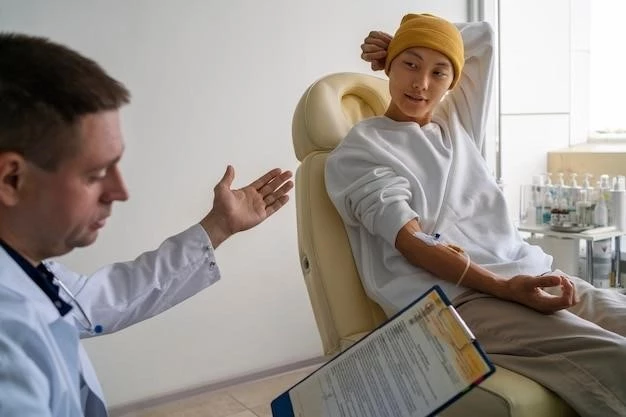Understanding Argyria and Its Various Aspects
Causes of Argyria⁚ Argyria is caused by prolonged exposure to silver‚ either through ingestion‚ inhalation‚ or through the skin․ Understanding the sources of silver exposure is crucial in preventing this condition․
Causes of Argyria
Argyria is primarily caused by the deposition of silver compounds in the skin and mucous membranes due to prolonged exposure to silver or silver compounds․ Common sources of silver exposure include⁚
- Occupational Exposure⁚ People working in industries like silver mining‚ silver refining‚ or manufacturing of silver-containing products are at risk․
- Medical Treatments⁚ Overuse of colloidal silver‚ a type of liquid containing silver particles‚ can lead to argyria․
- Cosmetics⁚ Some cosmetics and skincare products containing silver could potentially contribute to silver exposure․
- Environmental Factors⁚ Contamination of water or soil with silver can also result in exposure to the metal․
It is important to be cautious with products that may contain silver and to follow safety guidelines to minimize exposure․ Seeking medical advice if you suspect exposure to silver is essential in preventing argyria․
Symptoms of Argyria
Argyria is characterized by a noticeable discoloration of the skin‚ turning it a bluish-gray or gray color․ Common symptoms of argyria include⁚
- Skin Changes⁚ The most prominent symptom is the development of blue-gray or gray patches on the skin‚ which can be localized or widespread․
- Eye Discoloration⁚ In some cases‚ the whites of the eyes may also take on a bluish-gray hue․
- Mucous Membrane Discoloration⁚ Discoloration of mucous membranes in the mouth‚ nose‚ or genital areas may occur in severe cases․
- Photosensitivity⁚ Increased sensitivity to sunlight is common among individuals with argyria․
If you notice any unusual changes in your skin color or experience any of these symptoms after exposure to silver or silver-containing products‚ it is important to seek medical advice for proper diagnosis and management of argyria․
Diagnosis of Argyria
Diagnosing argyria typically involves a combination of medical history‚ physical examination‚ and specific tests to confirm the presence of silver deposits in the skin or mucous membranes․ The diagnostic process may include⁚
- Physical Examination⁚ A healthcare provider will examine the skin and mucous membranes to look for characteristic discoloration․
- Medical History⁚ Providing information about exposure to silver‚ including occupational exposure or use of silver-containing products‚ is essential․
- Biopsy⁚ A small sample of the affected skin may be taken for analysis to confirm the presence of silver particles․
- Wood’s Lamp Examination⁚ This specialized ultraviolet light test can help visualize the distribution of silver particles in the skin․
If you suspect you have argyria based on symptoms or exposure history‚ consult a healthcare professional for an accurate diagnosis; Early detection can lead to timely interventions and appropriate management of the condition․
Treatment Options for Argyria
Managing argyria focuses on symptom relief and addressing the cosmetic concerns associated with skin discoloration․ While there is no definitive cure for argyria‚ treatment options aim to improve the appearance of the skin and other affected areas․ Some possible approaches include⁚
- Discontinuation of Silver Exposure⁚ Avoid further exposure to silver or silver-containing products to prevent worsening of the condition․
- Topical Treatments⁚ Certain creams or ointments may help reduce the visibility of skin discoloration․
- Laser Therapy⁚ Laser treatments may be considered to target and lighten the areas of skin affected by argyria․
- Cosmetic Camouflage⁚ Makeup or skin-colored creams can be used to conceal the discoloration․
It is important to consult with a dermatologist or healthcare provider to discuss the most suitable treatment options based on individual factors such as the extent of discoloration and overall health․ Regular monitoring and follow-up care are essential to manage argyria effectively․
Prevention of Argyria
Preventing argyria involves taking proactive measures to minimize exposure to silver and silver compounds‚ reducing the risk of developing this condition․ Consider the following guidelines to help prevent argyria⁚
- Be Informed⁚ Understand the sources of silver exposure‚ including occupational hazards‚ silver-containing products‚ and environmental factors․
- Limit Silver Use⁚ Use silver-based products‚ such as supplements or topical treatments‚ only as directed by healthcare professionals․
- Protective Measures⁚ When working with silver or silver products‚ ensure proper ventilation‚ wear protective gear‚ and follow safety protocols․
- Alternative Products⁚ Explore non-silver alternatives for personal care products‚ cosmetics‚ and supplements․
- Regular Monitoring⁚ If you have concerns about potential silver exposure‚ speak with a healthcare provider for guidance and monitoring․
By adopting these preventive strategies and staying vigilant about silver exposure‚ you can lower the likelihood of developing argyria and maintain skin health and overall well-being․
Complications of Argyria
While argyria is primarily a cosmetic concern due to skin discoloration‚ long-term exposure to silver can lead to potential complications․ Some complications associated with argyria include⁚
- Psychological Impact⁚ The visible skin changes in argyria can have a psychological impact‚ affecting self-esteem and emotional well-being․
- Social Stigma⁚ Individuals with noticeable skin discoloration may experience social discomfort or discrimination‚ impacting relationships and interactions․
- Sun Sensitivity⁚ The affected skin areas in argyria may be more sensitive to sunlight‚ increasing the risk of sunburn and other skin damage․
- Dermatological Issues⁚ Prolonged silver exposure can lead to skin irritation‚ inflammation‚ or other skin conditions in some cases․
It is essential for individuals with argyria to address not only the physical aspects but also the potential emotional and social implications of the condition․ Seeking support from healthcare professionals and mental health providers can help in coping with these complications and maintaining overall well-being․

Silver Exposure and Argyria
Silver exposure is a key factor in the development of argyria‚ a condition characterized by skin discoloration․ Understanding the relationship between silver exposure and argyria is crucial in prevention․ Here are important points to consider⁚
- Sources of Exposure⁚ Silver exposure can occur through various means‚ including occupational settings‚ medical treatments‚ and the use of silver-containing products․
- Risk Factors⁚ Individuals working in industries involving silver‚ using colloidal silver supplements‚ or using silver in traditional remedies are at higher risk․
- Accumulation in Tissues⁚ Prolonged exposure leads to the deposition of silver compounds in the skin and mucous membranes‚ resulting in the characteristic discoloration of argyria․
- Preventive Measures⁚ Minimizing unnecessary exposure to silver‚ following safety guidelines in workplaces‚ and using silver products judiciously can help prevent argyria․
By being aware of the implications of silver exposure and taking proactive steps to limit exposure‚ individuals can reduce the risk of developing argyria and maintain skin health and appearance․
Research Developments in Argyria
Continuous research is being conducted to enhance understanding and management of argyria․ Scientists are exploring various aspects of the condition to improve diagnosis‚ treatment‚ and prevention․ Some key research developments in argyria include⁚
- Diagnostic Advancements⁚ Researchers are investigating novel methods‚ such as advanced imaging techniques‚ to enhance the accuracy and efficiency of diagnosing argyria․
- Treatment Innovations⁚ Ongoing studies are focusing on the development of new treatment modalities‚ including targeted therapies and combination approaches for managing argyria․
- Preventive Strategies⁚ Research efforts aim to identify effective preventive measures‚ guidelines‚ and public health initiatives to reduce the incidence of argyria․
- Long-Term Effects⁚ Studies are exploring the long-term implications of argyria on skin health‚ psychological well-being‚ and overall quality of life to improve patient outcomes․
By staying updated on research advancements in argyria‚ healthcare professionals and individuals can contribute to the collective efforts aimed at advancing knowledge‚ enhancing care practices‚ and ultimately improving the lives of those affected by this condition․
